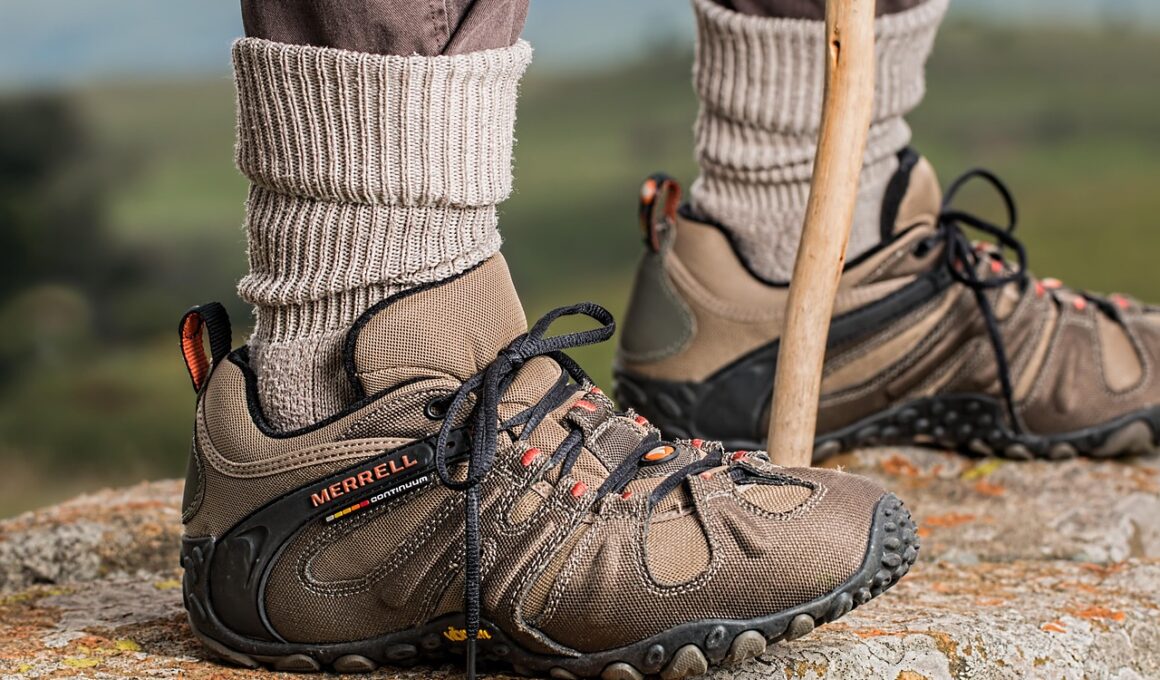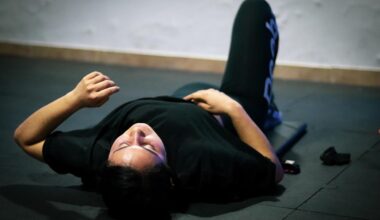The Importance of Proper Footwear in Senior Exercise Safety
Choosing the right footwear is crucial for seniors engaging in any physical activity. Proper shoes can significantly impact balance, stability, and overall safety during exercise, helping to prevent accidents. Shoes designed with specific features, such as non-slip soles and arch support, are ideal for seniors. Additionally, the right fit ensures that the shoes do not rub or cause discomfort, which can lead to injuries. Seniors should look for footwear that offers cushioning to absorb impact and minimize stress on joints. Lightweight shoes can also help maintain agility and reduce the risk of falls. It is essential to avoid wearing worn-out shoes, as they can provide inadequate support and traction. Footwear designed for specific activities, such as walking or aerobic dancing, can enhance performance and safety. When selecting shoes, seniors should consider their individual foot shape and any specific needs, such as orthotic inserts for added support. Choosing appropriate shoes can significantly contribute to a safer and more enjoyable exercise experience for seniors. Remember that safety starts with the ground up, so investing in good footwear is investing in health and well-being.
In addition to proper shoe selection, seniors should prioritize understanding how their chosen footwear interacts with exercise environments. Different surfaces can significantly affect stability and traction. For instance, walking on grass, concrete, or gym floors requires shoes that provide proper support for varied terrains. The choice of footwear may also change based on the type of exercise being performed, whether it’s walking, jogging, or dancing. Seniors should be particularly mindful of wearing shoes that eliminate the risk of slipping, especially in wet or uneven areas. Engaging in regular activities such as yoga, Pilates, or strength training necessitates shoes offering flexibility and grip. It’s wise to discourage the use of flip-flops or open-toed shoes during exercise to avoid potential toe injuries. A well-cushioned shoe can mitigate joint pain during impact-heavy exercises, enhancing comfort. Seniors should also make sure their shoes do not restrict foot movement, which can be key to balance. Altogether, understanding how footwear interacts with exercise environments creates a safer exercise regimen. Ultimately, an effective exercise plan for seniors integrates proper instructions for shoe selection suitable for their specific fitness activities.
Another fundamental aspect of maintaining safety while exercising is learning about foot health. Seniors should pay attention to any signs of discomfort or foot problems that may arise when wearing inappropriate shoes. Common conditions like bunions, corns, or plantar fasciitis can worsen with the wrong footwear. Regular foot assessments can help identify any unnecessary pressure points that could lead to pain or injuries. Seniors are encouraged to schedule regular check-ups with a podiatrist, especially if they experience consistent foot or joint pain. Proper hygiene, such as keeping feet clean and moisturized, helps ward off infections and discomfort. Furthermore, cushioning the shoe with orthotic inserts may alleviate pressure and provide extra support. Additionally, wearing socks made from breathable materials can enhance overall foot comfort. Understand that swelling may happen during prolonged activity; therefore, shoes that adapt may be essential for seniors. Encouraging healthy foot habits can lead to a more enjoyable and fulfilling exercise routine while minimizing complications. Being proactive in addressing foot health is an integral component of exercise safety for seniors. Ultimately, healthy feet contribute to healthier bodies and enhanced quality of life.
Choosing the Right Exercise Program
Selecting an appropriate exercise program is pivotal for seniors to exercise safely. Individual fitness levels, general health, and personal goals should dictate the type of exercises chosen. Some forms of exercise may place higher demands on foot mobility and stability than others. Engaging in low-impact activities like swimming or stationary cycling may be suitable for those who experience joint pain. Exercise classes designed for seniors often emphasize balance and strength, helping reduce the risk of falls. Professionals can assist in establishing the right routines tailored to each participant’s needs. Exploring options like water aerobics or tai chi can significantly enhance safety and coordination. Social benefits should not be overlooked; exercising with peers can foster a supportive environment that encourages commitment. As seniors explore new exercise options, they should ensure their footwear aligns with the requirements of those activities, especially regarding traction and support. Consulting fitness professionals to tailor programs specifically for seniors can ensure safety while maximizing exercise benefits, helping to prevent injuries. A well-structured exercise plan can lead to improved strength, flexibility, and confidence in daily life.
Seniors should also incorporate warm-ups and cool-downs into their exercise routines to enhance safety. A proper warm-up prepares the body for physical activity, increasing blood flow and reducing the risk of injury. Engaging in gentle stretching tailored to individual capabilities before exercising can improve flexibility and facilitate movement. On the other hand, incorporating a cool-down phase helps the body transition back to a resting state, aiding in recovery. Adequate hydration should be maintained before, during, and after exercise sessions, regardless of the activity performed. Dehydration can diminish physical performance and increase the likelihood of injuries. Seniors should remain diligent about their hydration levels, especially if exercising in warm conditions. Additionally, choosing appropriate times and environments for exercise can also enhance safety. Tagging alongside fellow seniors to ensure social connections while exercising can enrich the experience. An attentive approach to incorporating warm-ups and cool-downs fosters safe practices during all physical activities. Lastly, maintaining open communication channels with instructors and peers about comfort levels can further enhance the seniors’ exercise journey. This strategy can essentially build confidence, encourage goal setting, and aid in establishing safe practices.
The Role of Community Resources
Recognizing and utilizing community resources can significantly increase exercise safety among seniors. Many local gyms and community centers offer programs specifically designed for older adults, featuring qualified trainers who understand their unique needs. Joining group fitness classes can provide social engagement while promoting a safe environment for exercising. Partners can assist in assessing the appropriateness of exercises and offer feedback on proper shoe selection for safety during activities. Additionally, local health and wellness organizations may also provide resources, workshops, and seminars focusing on exercise safety for seniors. Engaging with peer groups assists in building confidence and motivation to remain active. The presence of professionals at these facilities can positively impact seniors’ overall enjoyment of physical activity. Furthermore, outdoor recreational programs can provide natural settings conducive to safe exercise, guiding seniors on adapting footwear for various terrains. Both individual and communal approaches to exercise safety pave the way for healthier, more active lifestyles. To sum up, community resources and group involvement help reinforce the importance of safety in senior fitness while ensuring a safer and brighter exercise experience.
Ultimately, investing in proper footwear and safety practices enhances seniors’ overall quality of life. The right shoes not only support physical activity but also foster independence and confidence. Participation in regular exercise allows seniors to build strength, maintain flexibility, and establish better balance, reducing the risk of falls and injuries. Safety during exercise creates opportunities for further exploration of activities that contribute to a vibrant lifestyle. Seniors can seek guidance from family or professionals in identifying optimal footwear choices and exercise routines suited to their needs. Education on exercise safety should become an ongoing conversation, addressing new insights and incorporating latest findings into practice. Seniors can proactively engage in exercise-related discussions, emphasizing safety knowledge that directly impacts their well-being in daily life. When seniors prioritize safety and footwear, they empower themselves to embrace fitness fully. Encouraging friends and family to join in safety discussions can enhance the collective sense of community. In the end, proper footwear combined with an awareness of exercise safety can transform the exercise experience for seniors. Emphasis on health leads to happier and healthier golden years for seniors.
Conclusion
In conclusion, adequate footwear is vital to enhancing exercise safety for seniors by combining comfort, fit, and functionality. Seniors should examine their individual needs, focusing on foot health while selecting appropriate footwear. Engaging in fitness programs that prioritize safety can enhance their experience while promoting a healthier lifestyle. As they become more physically active, seniors can enjoy the benefits of improved strength, flexibility, and quality of life. By consistently prioritizing footwear and safety when exercising, seniors will foster a culture of health and well-being. In the long run, investment in proper footwear results in more than just physical safety; it provides emotional and psychological support leading to engagement in a fulfilling life. Seniors can confidently step into their golden years, empowered by informed choices, expert guidance, and community support. Staying grounded in the right footwear further underscores their commitment to active living. Encouraging a culture of fitness among seniors can pave the way for lasting friendships and connections. Ultimately, focusing on footwear and safety can revolutionize the exercise experience for seniors for the better.


